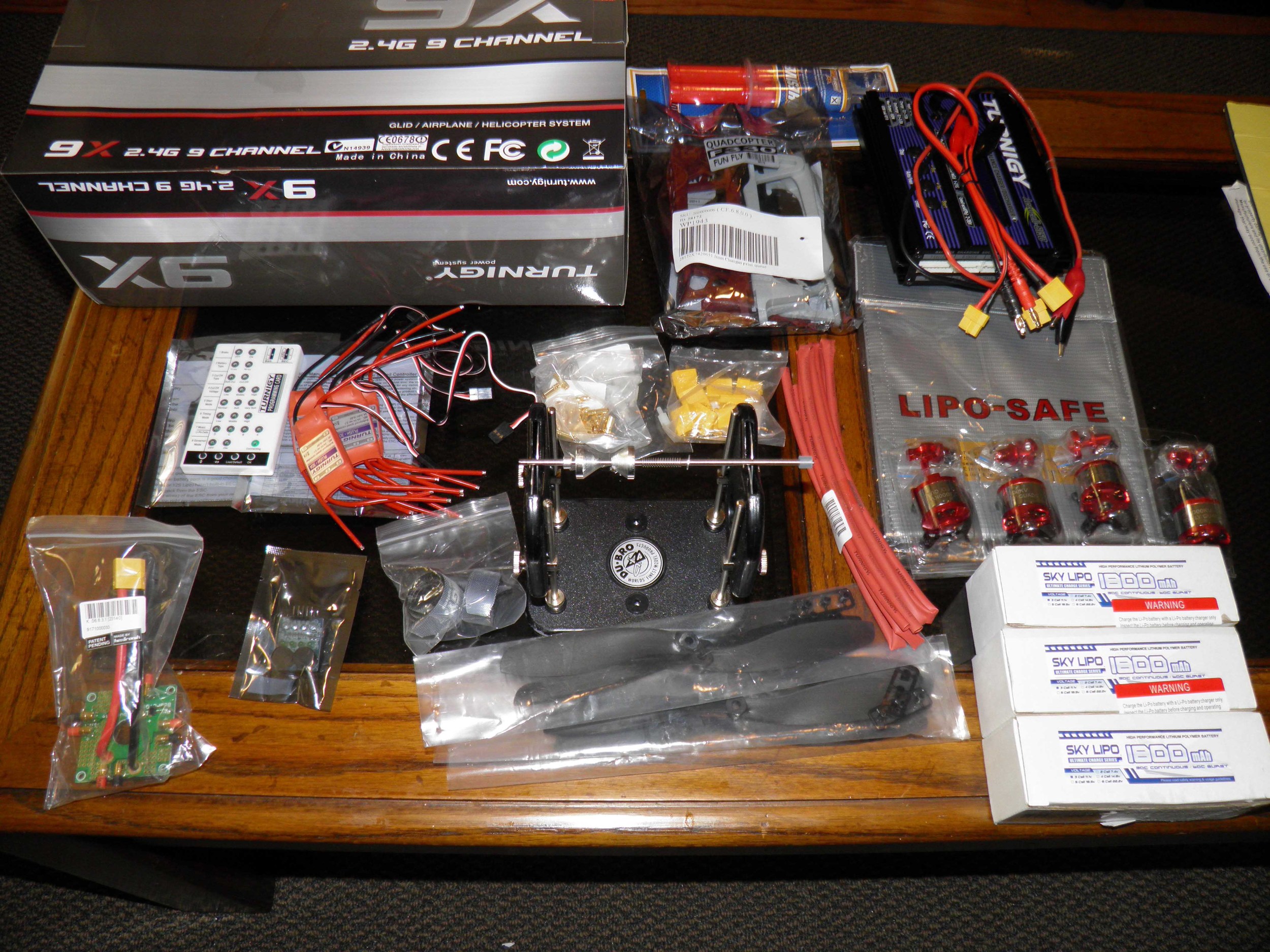Quadcopter Part 1 - Purchasing Parts and Overview
/After stumbling upon footage from a GoPro strapped on a quadcopter, I got excited and started doing some research on quadcopters. It seemed like a really awesome hobby that would be a perfect fit for my interests. There's a wealth of information available online but it seemed spread out over many resources so I decided I'd document my build and try to get all the information in one place.
The first step in building a quadcopter is selecting the parts and purchasing them. I received part suggestions from a friend and used this calculator to run the initial analysis of the parts and to verify they would work together and confirm it would be able to lift the GoPro as a payload. There are many forums out there that will provide beginners with suggestions as well. Pick out some parts, post on a forum or reddit, and get some feedback before pulling the trigger.
The initial cost of getting into any RC hobby is pretty high, but there are many things that you can re-use for other projects. The total sum of parts for just the quadcopter is around $150. All of the other equipment such as chargers, batteries, a transmitter, configuration devices, and shipping raise the total cost. I talked with a friend who had experience with quadcopters and RC aircraft and he supported my idea to purchase quality equipment up front to avoid having to upgrade cheap/budget equipment in the future. I also purchased a "trainer" mini quadcopter - a V939 beetle for about $40. I was reluctant at first but after using it for initial test flights it has really helped with my piloting skills and it's actually an extremely fun little copter to fly around in tight spaces. This is definitely not the cheapest bill of materials but it will save money in the long run as I continue with this hobby. I've attached a google spreadsheet doc of the BOM with links to the parts I purchased. One of the most frustrating things about building a quadcopter is waiting for your parts to be delivered!


Below I've written up a summary of what each part of the quadcopter is used for.
- Lithium Polymer Batteries - Provide the power for the quadcopter.
- Low Voltage LiPo Alarm - When the voltage of the batteries falls below a certain threshold, the LiPo alarm will sound to notify the pilot of the need to land.
- Battery Straps - Handy velcro straps used to secure the battery to the frame during flight.
- Balanced Charger - When charging LiPo batteries, it's more safe and better for the batteries to balance charge them. These chargers ensure that all the cells of the batteries are charged in unison.
- 550 Watt PSU - This is a power supply for a computer that isconverted to provide the balanced charger with a steady 12 volts. (See tutorial here)
- Fireproof Charging Bags - Since LiPos have been known to catch fire, they should always be charged under supervision, in a fireproof location, and in a fireproof charging bag.
- 1000 kv Motors - These motors will produce 1000 rpms per volt. They will spin the propellers to provide thrust.
- Locktite, Lock Nuts, and Washers - The prop adapters on the motors I bought do not provide sufficient pressure on the props. Lock nuts/washer and loctite is used to make sure the props do not come off mid-flight.
- 8"x4.5" Propellers - These are 8" wide propellers with a 4.5" pitch. Different colors should be purchased for the front pair and back pair to provide easier orientation while flying. Buy a lot of spares! They are the easiest thing to break.
- Prop Balancer - This device will help balance the props. It is important step used to reduce vibration and improve flight.
- Thick CA Glue - Used to add weight to props for balancing and used for any repairs.
- Frame - Most frame choices will take into consideration the required payload and desired appearance.
- Power Distribution Board - This small board is a neat and compact way to distribute the power from the batteries to the ESCs. Its connections are all removable plugs which makes part swapping easy in the event of damage.
- ESCs - These are speed controllers. They essentially convert a PWM signal from the flight control board to a voltage that will power the motors at various speeds.
- ESC Programming Card - This device will allow the programming of the ESCs without the use of a computer and special programming cables.
- MultiWii Flight Control Board - This is the brain of the quadcopter. It has multiple sensors that provide feedback to the control chip to produce a balanced and stable flight. It also takes the signals from the receiver and sends them on to the ESCs. The MultiWii is open source and based on Arduino. It connects up to the computer to provide advanced sensor feedback and setup. For a more plug and play flight controller, try the KK2.0 Flight Control Board.
- Receiver - The transmitter I purchased came with an 9x 8 channel receiver. This takes the radio signals received from the transmitter and sends them on to the flight control board.
- Heat Shrink Tubing - Used for cleaning up and organizing the wires/connectors. It also helps insulate exposed connectors to prevent shorts.
- Rubber Mounting Foam - Used to reduce vibrations from the frame to the flight control board or any other part it is used on.
- 3.5mm Bullet Connectors - Used to connect motors to ESCs and the ESCs to the PDB.
- XT60 Connectors - Used to connect the batteries to the PDB.

